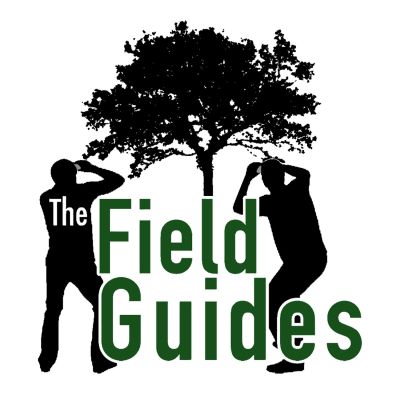Nature nerds rejoice! The Field Guides is a monthly podcast that will bring you out on the trail, focusing on the science of our North American wildlife.
http://www.thefieldguidespodcast.com/new-blog/
Ep. 20 - Get the Buck Out!
So, how do you feel about deer? Over the past 100 years, populations of the White-tailed Deer (Odocoileus virginianus) have gone from scarce to ubiquitous. There’s a significant body of research pointing to the detrimental impacts of deer overbrowsing on our forests. Here at The Field Guides, we don’t like to exclude anyone, but we are interested in learning about deer exclosures – structures designed to keep these plentiful herbivores out of an area. Usually they are placed to allow for forest regeneration or to study the effects of deer exclusion; often, it’s done for both reasons. So what does the research show? Does excluding deer lead to healthier forests? This episode will shed some light on the answer. Listen to this rare, Steve-less episode as Bill is joined by Kristen Rosenburg, an environmental educator with the New York State Department of Environmental Conservation. They discuss deer exclosures, check some out at Kristen’s work site, and talk about what happens when researchers “Build That Wall!”. Special thanks to Kristen for sharing her time and expertise with us, as well as to the NYS DEC for allowing us to steal Kristen away for a morning.
This episode was recorded at Reinstein Woods Nature Preserve in Cheektowaga, NY in August of 2017.
Episode Notes
During the episode, Bill referenced a study concerning deer exclosures and exotic plants. Specifically, he mentioned how the study found that Multiflora Rose (Rosa multiflora), an invasive species in many areas of North America, was more abundant within the deer exclosures monitored in the study. This finding was in contrast to others that found deer often are agents in the spread of exotic species. Bill had failed to dig into the discussion of the study before recording time, but in doing so later on, he came across the researchers' hypothesis. They mentioned that previous research has demonstrated "a strong association between the range expansions of R. multiflora and the northern mockingbird (Mimus polyglottos) in North America." Multiflora Rose seeds are also a preferred food item of White-footed Mice (Peromyscus leucopus). Since the understory vegetation was more advanced within the enclosure, birds and rodents could find more perches and cover than outside the exclosure. The researchers postulated that this encouraged more "dispersal and colonization [of Multiflora Rose] by ingestion and defecation or caching in the exclosure."
Photo Credit: Carl Chalupa: http://www.pixoto.com/images-photography/animals/other-mammals/deer-photobomb--4809991207256064
Relevant Links
Reinstein Woods Nature Preserve:
General Info: http://www.dec.ny.gov/education/1837.html
Information about Reinstein's programs: http://www.dec.ny.gov/education/1977.html
Works Cited
Bradshaw, Lauren, and Donald M. Waller. "Impacts of white-tailed deer on regional patterns of forest tree recruitment." Forest Ecology and Management375 (2016): 1-11.
DiTommaso, Antonio, et al. "Deer browsing delays succession by altering aboveground vegetation and belowground seed banks." PloS one 9.3 (2014): e91155.
Faison, Edward K., David R. Foster, and Stephen DeStefano. "Long-Term Deer Exclusion Has Complex Effects On A Suburban Forest Understory." Rhodora 118.976 (2016): 382-402.
Martin, Laura J., Anurag A. Agrawal, and Clifford E. Kraft. "Historically browsed jewelweed populations exhibit greater tolerance to deer herbivory than historically protected populations." Journal of Ecology 103.1 (2015): 243-249.
McGarvey, Jennifer C., et al. "Effects of twenty years of deer exclusion on woody vegetation at three life-history stages in a Mid-Atlantic Temperate Deciduous forest." Northeastern Naturalist 20.3 (2013): 451-468.
Roberson, Elizabeth J., et al. "Deer herbivory reduces web-building spider abundance by simplifying forest vegetation structure." PeerJ 4 (2016): e2538.
Shelton, Angela L., et al. "Effects of abundant white-tailed deer on vegetation, animals, mycorrhizal fungi, and soils." Forest ecology and management 320 (2014): 39-49.
Shen, Xiaoli, et al. "Long-term effects of white-tailed deer exclusion on the invasion of exotic plants: a case study in a mid-Atlantic temperate forest." PloS one 11.3 (2016): e0151825.
Webster, Christopher R., Janet H. Rock, and Michael A. Jenkins. "Response of spring flora to nearly two decades of deer exclusion and resurgent woody understories within exclosures." The Journal of the Torrey Botanical Society144.1 (2016): 1-14.
